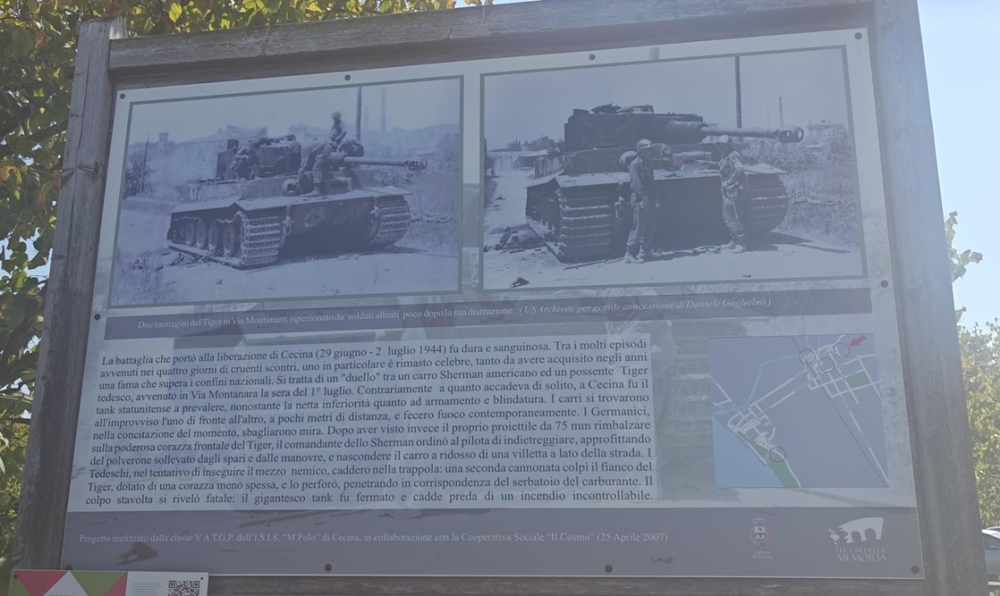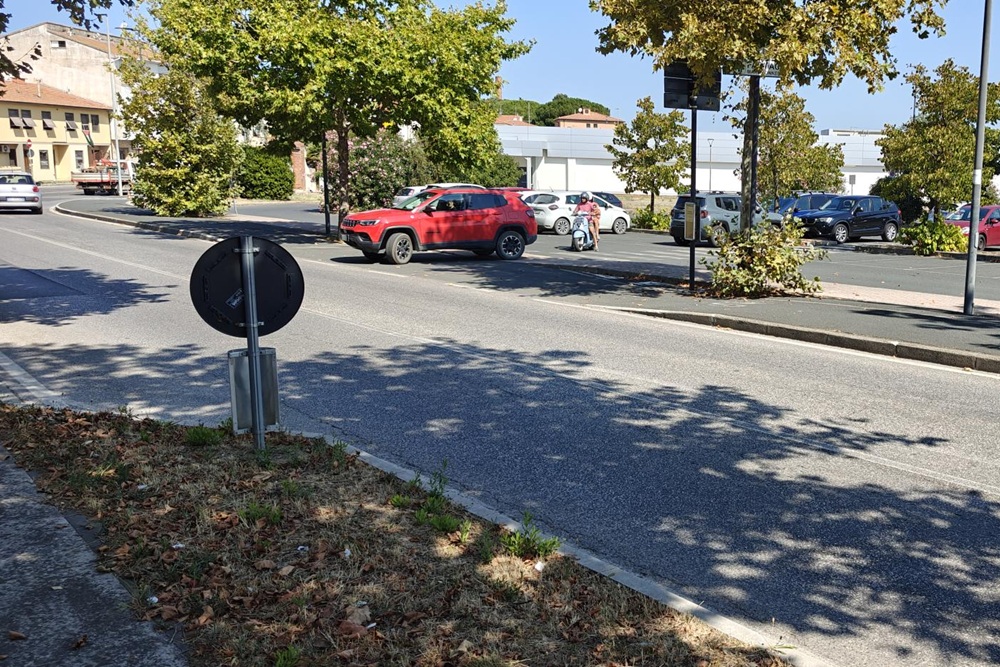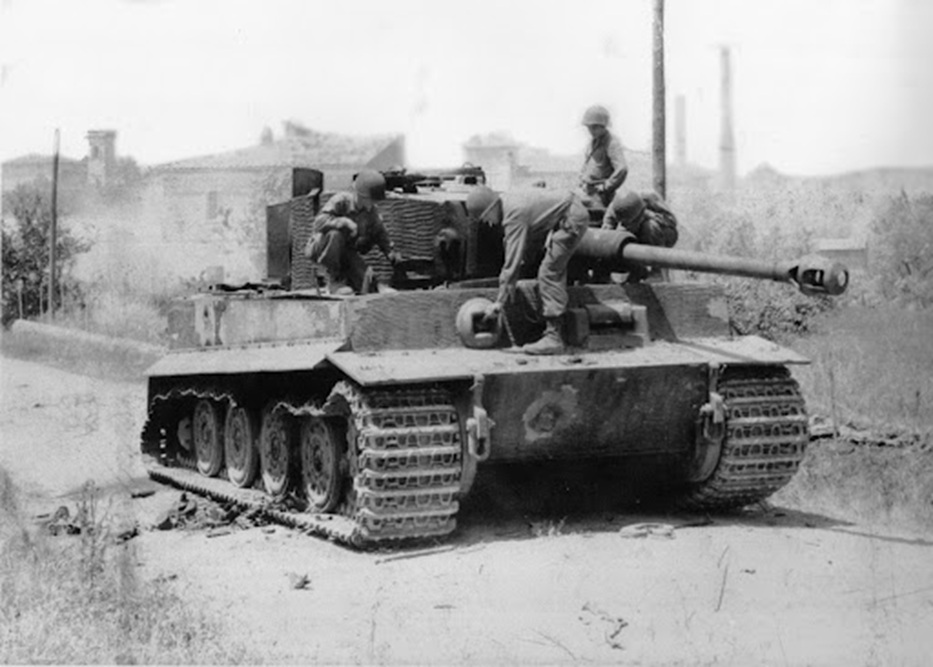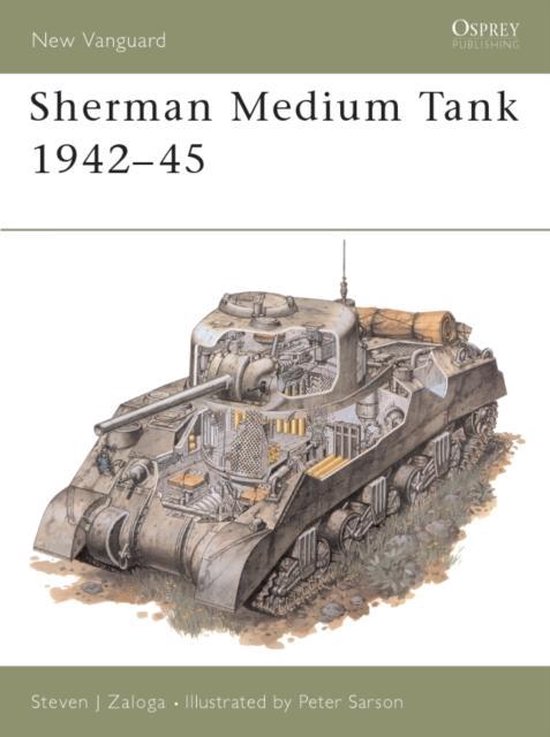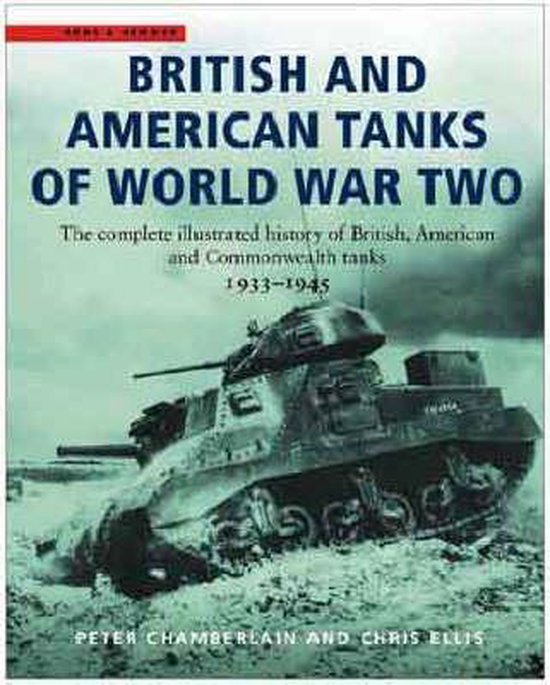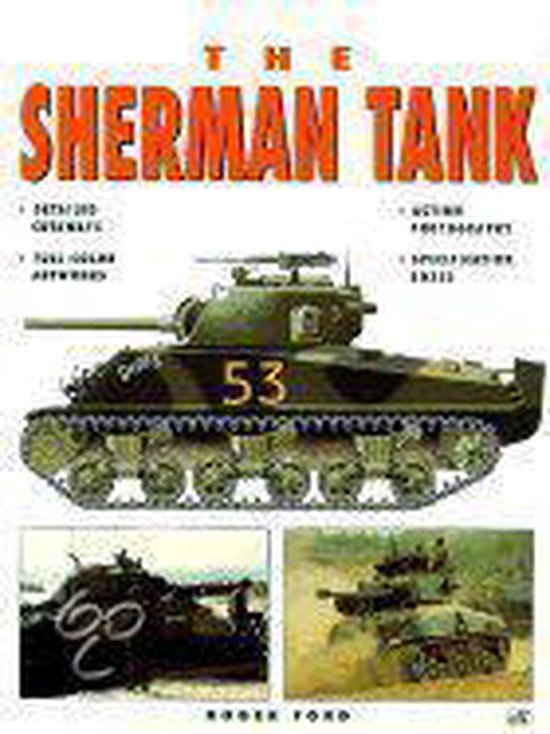Information Sign: Tigertank disabled by Shermantank Cecina
Information board telling the story of how a Tiger tank was destroyed by a Sherman tank.
At 8.30 p.m. on 1 July 1944, the last platoon of American tanks was informed by radio of a German counterattack from the east of Cecina, involving both armoured vehicles and infantry.
American reports indicate that the number of enemies was estimated at 5 to 10 Tiger tanks and a platoon of 200 infantrymen, but in reality the attack was led by only two Tiger tanks, a Stug and fewer than 50 grenadiers.
Meanwhile, Lieutenant Edwin Cox, commander of the five American Sherman tanks, had devised a plan that consisted of advancing to Magona, where the column of tanks had initially been spotted. He decided to spread the five tanks across the aforementioned parallel streets of Cecina, while he himself advanced via Via Montanara. As fate would have it, Cox's Sherman crossed paths with the Tiger commanded by German Lieutenant Wilhelm Keitel. Cox had just passed Via Manzoni on his left when he saw a soldier in a ditch at the side of the road. At regular intervals, the soldier stood up from the ditch and gestured to someone who was out of sight of the Sherman. Unbeknownst to the Americans, the German was acting as an observer for the Tiger. When the German stood up for the umpteenth time, the Americans shot him in the stomach and killed him. As the German fell, the long main gun of the Tiger immediately appeared. When the American tank drivers saw the Tiger appear in front of them, they panicked, because the chances of survival for a single Sherman against a Tiger were virtually nil, as the Americans were counting on their numerical superiority to defeat the giant Tigers. However, Lieutenant Cox gave the order to fire as he saw his whole life flash before his eyes and felt the shock that the Tiger would cause with its attack. Both tanks fired simultaneously, and in the tension, the Germans missed their target, causing a projectile intended to take out ground troops to hit the ground and the recoil to lift the Sherman off the ground without causing any damage.
The Americans' shot, on the other hand, hit its target and struck the underside of the Tiger's frontal armour plate, without damaging it. The projectile bounced off the tough armour plate of the German tank, much to the surprise of the Americans. Cox took advantage of the dust kicked up by the Tiger's shot to hide his tank behind the wall of a house. Cox turned the turret backwards and pointed the main gun at 5 o'clock. Cox took a calculated risk, assuming that the Tiger would continue on its main route and eventually pass right in front of his gun. The crew waited for the Tiger to reappear. While they waited, Cox's pilot looked at Sherman 13 and saw his commander repeatedly jump out of the open hatch with a machine gun to fire at the German soldiers trying to climb onto the other tanks in the platoon. Sherman 11 maintained its position while the Tiger fired at the surrounding buildings.
The Tiger 221 resumed its advance along Via Montanara. The crew of the Tiger 221 later stated that they thought the Sherman was in the bushes to their left. The German tank drivers were ready to fire. The driver drove slowly forward, while the machine gunner in the hull maintained radio contact with the other Tiger. It was now 8:45 p.m.
The Tiger 221 drove slowly forward and eventually ended up in front of the Sherman 11, directly in front of the main gun. Cox gave his gunner, Corporal Jack Leech, instructions and told him to wait, no matter how much the corporal wanted to fire. When the Tiger was directly in front of the Sherman, Cox took advantage of the fact that the Tiger's side armour was thinner (80 mm thick) and gave the order to fire an armour-piercing shell. The 75 mm shell pierced the side armour as Cox had expected, and the impact even set the fuel tank on fire, causing the engine compartment to burst into flames. Cox and his men saw their chances of victory increasing. The Sherman immediately took advantage of the fire that distracted its opponents to fire another shot and pierce the Tiger's right track. But that was not enough to knock out the Tiger's crew, who managed to get out of the tank almost unharmed and hide in the ditch next to Via Montanara, where they were helped by their infantry. The fact that the crew managed to escape proves that the Tiger was one of the most robust tanks of World War II, even if it lacked speed. The other enemy tanks were attacked by the Shermans that Cox had positioned on the other streets and which, shaken by the loss of a Tiger, withdrew, causing the German counterattack to fail. With the victory in this battle, the Americans managed to liberate most of Cecina from the German enemy, who had to retreat to the westernmost part of the city.
Do you have more information about this location? Inform us!
